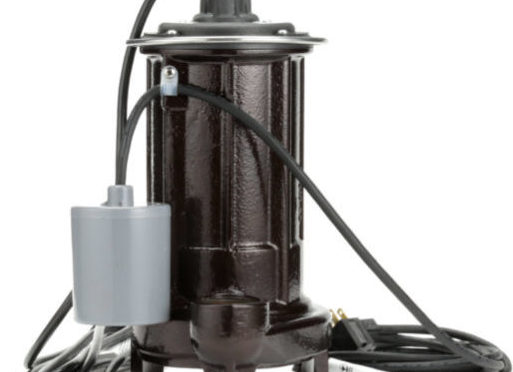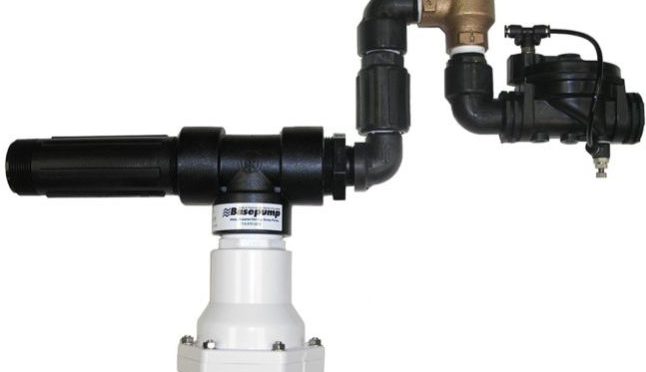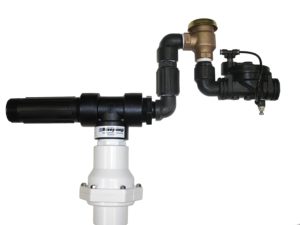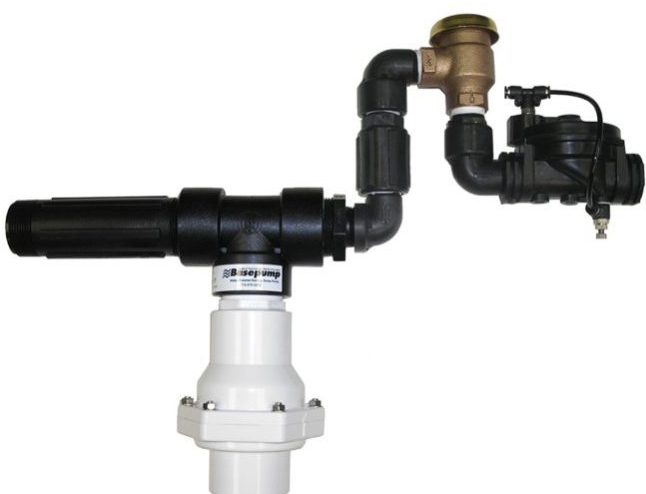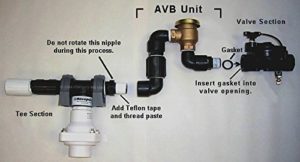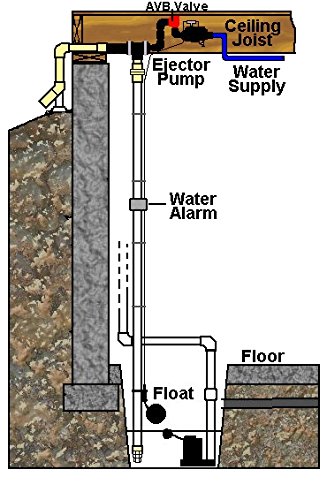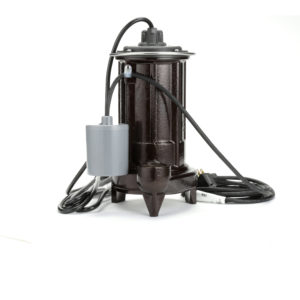 When it comes to sump pumps, we’ve reviewed enough to agree with the maxim that you generally get what you pay for. For example, a Zoeller M267 isn’t cheap, but it’ll give you faster water removal and longer service than virtually any other AC pump on the market. However, there’s a bit more to think about if you’re on a tighter budget. What’s going to power your sump pump? How reliable does it need to be? And of course, how much can you spend?
When it comes to sump pumps, we’ve reviewed enough to agree with the maxim that you generally get what you pay for. For example, a Zoeller M267 isn’t cheap, but it’ll give you faster water removal and longer service than virtually any other AC pump on the market. However, there’s a bit more to think about if you’re on a tighter budget. What’s going to power your sump pump? How reliable does it need to be? And of course, how much can you spend?
If you’re looking for a reliable sump pump, the first decision you’ll need to make will be whether to go with an AC-powered or water-powered pump. If you want a water-powered pump due to living in an area with frequent power outages, the best on the market is the Basepump CB1500. If you want a an AC-powered pump, there’s nothing faster or more reliable than the Zoeller M267. However, if you’re on a smaller budget, such as around the $200 mark, you’ll probably be looking more at pumps along the line of the Zoeller M63, Zoeller M57, or Wayne CDU1000. Today we’ll take a look at another $200-class backup sump pump that potentially offers decades of value: the Liberty Pumps 287 Automatic Submersible Sump Pump with VMF Switch. It’s not the fastest AC-powered pump in its price range, but it’s probably going to be the most reliable, which counts for something. We think it’s a great deal; read on for details, and you can buy it here.
Key Features of the Liberty Pumps 287 Sump Pump (60 Second Summary)
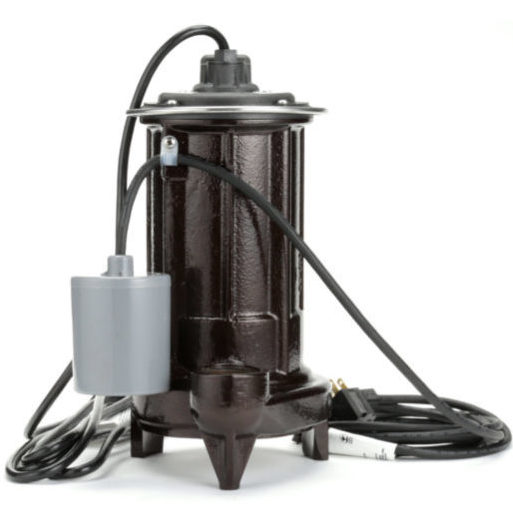 The Liberty Pumps 287 sump pump is an automatic submersible sump and effluent pump. It’s driven by a 1/2 horsepower thermally protected electric motor and can pump up to 4,020 gallons per hour; it comes with a 3 year warranty. It is 10 inches in diameter and 14 inches tall; it is housed in cast iron and weighs 19.5 pounds on our scale.
The Liberty Pumps 287 sump pump is an automatic submersible sump and effluent pump. It’s driven by a 1/2 horsepower thermally protected electric motor and can pump up to 4,020 gallons per hour; it comes with a 3 year warranty. It is 10 inches in diameter and 14 inches tall; it is housed in cast iron and weighs 19.5 pounds on our scale.
No battery backup is included with the Liberty Pumps 287. It is capable of handling up to 3/4″ solids and can handle liquids at up to 140F. The thermal overload temperature of the motor is 221F. The motor runs on 115 volts and 8 amps at full load. It includes a quick-connect 10 foot power cord. The float switch is a vertical magnetic float (VMF); it is non-adjustable and turns on at 9-1/2 inches and shuts off at 4 inches. The discharge is a 1-1/2 inch NPT and the sump pump is rated for installations in sump pits down to 10 inches in diameter.
Water removal peaks at 4,020 GPH at 0 feet, dropping to 3,360 GPH at 10 feet, 2,520 GPH at 20 feet, 1,350 GPH at 30 feet, and with shut-off and max-head occurring at 37 feet.
How Does the Liberty Pumps 287 Compare to the Zoeller M98, Zoeller M63, and Wayne CDU1000 Sump Pumps?
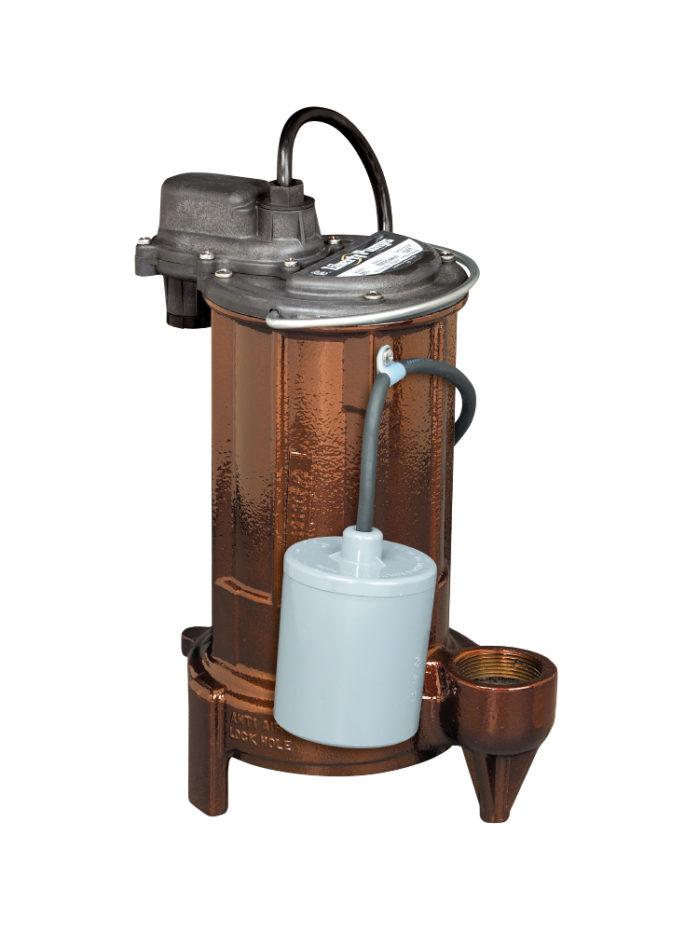 Perhaps the most unique element of the Liberty Pumps 287 is the magnetically-operated vertical float VMF switch. Unlike the typical mechanical float switch found in Zoeller and Wayne designs (e.g., a switch set into motion by a float, rod, and arm assembly), the Liberty 2xx series typically makes use of a magnetic/reed switch set into motion through a motor rod and float assembly. In plain English, this means the magnetic/reed design is less prone to failure than the mechanical design since the reed switch in the switch housing doesn’t need a rubber gasket installed to keep the switch arm sealed. Getting rid of the need for the rubber seal means the switch can’t fail due to water intrusion or this particular kind of mechanical failure. To put it more simply, there’s a good chance you’ll get at least as much life–if not more–out of this Liberty Pump as you would from any Zoeller or Wayne sump pump.
Perhaps the most unique element of the Liberty Pumps 287 is the magnetically-operated vertical float VMF switch. Unlike the typical mechanical float switch found in Zoeller and Wayne designs (e.g., a switch set into motion by a float, rod, and arm assembly), the Liberty 2xx series typically makes use of a magnetic/reed switch set into motion through a motor rod and float assembly. In plain English, this means the magnetic/reed design is less prone to failure than the mechanical design since the reed switch in the switch housing doesn’t need a rubber gasket installed to keep the switch arm sealed. Getting rid of the need for the rubber seal means the switch can’t fail due to water intrusion or this particular kind of mechanical failure. To put it more simply, there’s a good chance you’ll get at least as much life–if not more–out of this Liberty Pump as you would from any Zoeller or Wayne sump pump.
Aside from the difference in float switch design, the Liberty Pumps 287 is simply faster than most pumps on the market while offering a greater maximum pumping height than almost any other sump pump available. The Zoeller M57 tops out at 2,580 GPH and shuts off at 19 feet. The Zoeller M63 increases the shut-off height to 20 feet but is no faster than the M57. The Zoeller M98 tops out at 4,320 GPH and shuts off at 23 feet, but has reliability issues. The Wayne CDU1000 tops out at 5,400 GPH but shuts off at 22 feet. Even the mighty Zoeller M267, which can pump up to 7,680 gallons per hour, shuts off at 21 feet. If you need to move water a great distance vertically, the only pumps we’ve found under $500 capable of moving water higher are the Tsurumi LSC, which shuts off at 40 feet, and the Liberty Pumps 297, which shuts off at 48 feet. However, unlike the Liberty Pumps 287 or 297, the Tsurumi isn’t automatic.
Our Short and Long Term Experiences Installing and Using the Liberty Pumps 287 Sump Pump
Installation is straightforward; you essentially drop the pump in the pit, connect it to the discharge pipe, set the float, and plug it in. The main thing to remember is that you don’t want to let the pump run dry; even though a thermal overload is included to protect the motor, it’s not something you want to test any more than necessary.
Once installed, you can expect more than a decade of trouble-free use from the 287 as long as you remember to check the float switch from time to time. That said, it’s always a good idea to have a backup pump set up whenever you’re depending on a sump pump to protect something you value (e.g., a dry basement). In day to day operation, it’s a very quiet sump pump and a rather attractive one. We’re also happy to note it’s capable of grinding solids in the pit, making it a good choice for locations with contaminants in groundwater.
Troubleshooting and Installation Tips to Get Your Liberty Pumps 287 Working Sooner
No matter how reliable an AC sump pump may be (and the Liberty Pumps 287 is one of the best), we’d never recommend having just one sump pump installed in a home; redundancy is key. It doesn’t matter whether you choose a water-based backup pump like the Liberty Pumps SJ10 or a DC backup like the Wayne WSM3300 (or a budget backup like the Wayne ESP25), you’ll want something to help you if you suffer a power outage during a flood or thunderstorm.
Of course, whatever you get, make sure you install the float switch on the backup above that of the 287 so the 287 activates first while the backup only activates if the 287 doesn’t (or can’t keep up with the water rise). And as with any main sump pump, we also recommend installing a water alarm alongside it. This should be installed above your backup float switch (if you have one) in order to alert you if every water-draining recourse is failing to keep up with rising waters. We recommend the Basement Watchdog. If you’ve got a main pump, a backup pump, and a water alarm, you should have very low odds of ever needing to deal with a basement that floods when it rains.
Liberty Pumps 287 Sump Pump Pros, Cons, and Value Comparison
In conclusion, the Liberty Pumps 287 is quite possibly the best combination of speed, reliability, and portability you’re going to find in an AC-powered sump pump at the $200 mark. If you’re looking for a compact, cast-iron sump pump with an incredible max height that pumps at a good speed while offering superior reliability without costing as much as a mortgage payment, you’ll be hard pressed to find anything better than the Liberty Pumps 287. It’s not the fastest pump on the market, but with the advantages it offers, it certainly doesn’t need to be, and it’s more than fast enough to meet most homeowners’ and landlords’ needs.
You can buy the Liberty Pumps 287 here on Amazon. You can buy the Zoeller M267 here. You can buy the Liberty Pumps SJ10 here. You can buy the Wayne WSM3300 here or buy the Wayne ESP25 here. You can buy a water alarm here. You can buy a silent check valve here.
 If you find our work at PumpThatSump helpful, you can put our relentless reviewing of every pump and fixture on the market to the test by shopping via our links above for whatever you need to make your house a home. Despite being self-employed, we promise not to spend it all on health insurance.
If you find our work at PumpThatSump helpful, you can put our relentless reviewing of every pump and fixture on the market to the test by shopping via our links above for whatever you need to make your house a home. Despite being self-employed, we promise not to spend it all on health insurance.
